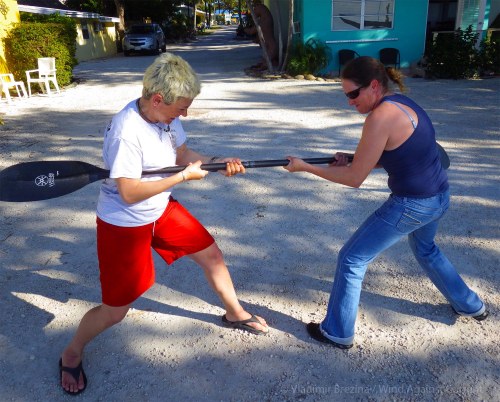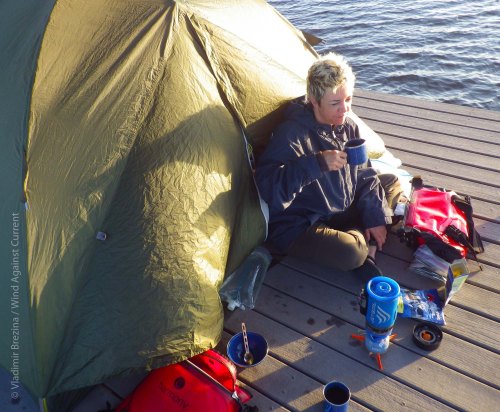By Vladimir Brezina
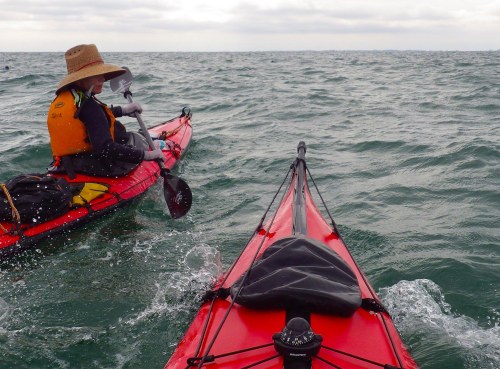
Course: 130 degrees magnetic!
I distinctly remember the first time the value of a good marine compass was driven home to me. I was circumnavigating Staten Island for the first time, clockwise, and had reached the gradual turn around the southwest tip of the island at Tottenville. I had never been there before—everything was new. I had a marine chart, but the very tip of the island was folded over on the other side, just out of sight. It didn’t seem necessary to refold the chart, especially as, as soon as I passed around the tip of the island into the Arthur Kill, I would have to fold the chart back again. And hadn’t I just studied the chart and knew exactly what was ahead? And so, as I made the turn and was faced with the choice of several waterways, I boldly set off toward the Raritan River instead of the Arthur Kill. Only when I was almost in the Raritan River did I happen to glance idly at the compass, to discover with a shock that I was paddling 90 degrees off course, west instead of north…
But as I grew familiar with New York Harbor, the compass seemed less relevant. I dutifully strapped it onto the boat for every trip, but I hardly ever looked at it.
Perhaps because I hardly looked at it, I was able for many years to get away with the Suunto Orca. For a folding kayak, I needed a strap-on, rather than a permanently mounted, compass, and the Orca was one of the few available. But it’s very popular, I notice, even among hard-shell kayakers, who have many other choices.
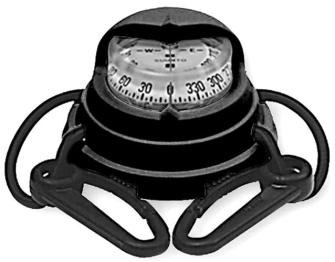
But when in recent years we started to take longer trips into unknown waters, and I really needed a compass, I found I could hardly use the Orca.
Rather than having an evenly rounded globe of clear plastic, like most compasses, the Orca has a boxy shape, with an awkward bend along the top, just in the wrong place to distort the view of the numbers underneath. And the bend tends to accumulate scratches, making the plastic even more opaque.
But most importantly, the numbers on the Orca’s card are too small. On a kayak, you want to mount your compass as far forward as possible, so that you can keep both the compass and the horizon in view at the same time. But when mounted far forward, the Orca’s numbers can hardly be read, through the scratches and the water droplets that also gather on the compass.
Enter the Brunton 58. A much better compass! It has a rounded globe. The numbers, and especially the letters for the principal compass points, are much bigger than the Orca’s.
A much better compass! It has a rounded globe. The numbers, and especially the letters for the principal compass points, are much bigger than the Orca’s.
Underneath it is nicely shaped to sit solidly on the ridge of a peaked kayak deck, without sliding to one side or the other, like the Orca tends to do.
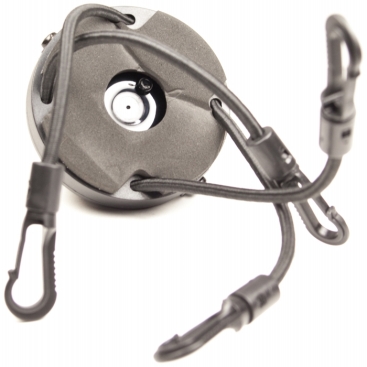
And, online, the Brunton 58 is even a little cheaper—around $50—than the Orca ($70).
During the 2014 Everglades Challenge, I certainly appreciated having a good compass. On a number of occasions, when we were hesitating which way to paddle among the indistinguishable mangrove islands, a glance at the compass immediately made it clear.
And, as happens with the best equipment, the compass began speaking to me. (No, this was not a hallucination—although a speaking compass would not have been that remarkable among the bizarre hallucinations on that trip…) Rather than sitting there passively, waiting to be interrogated with difficulty only when absolutely necessary, as with the Orca, the Brunton was such a pleasure to look at that I naturally incorporated it into the round of things I looked at while paddling—the waves, the clouds, the compass… It was quietly pushing information at me, constantly telling me that we were on the right course—or sometimes not.
And having a good compass eliminated the conversations with Johna that always went something like this:
Vlad: “See those two islands, the big one and the little one? We’ll paddle through the gap between them.”
Johna: “You mean the big island with the tall trees?”
Vlad: “No, more to the right. The island with the white tower.”
Johna: “I see two white towers…”
Now I just say: “Steer 130 degrees magnetic!”
Or rather, I would say that if Johna too had a usable compass. During the Everglades Challenge, she still had an Orca.
We left Johna’s Orca behind in Florida at the end of that trip. Now we’ll get her a Brunton.

